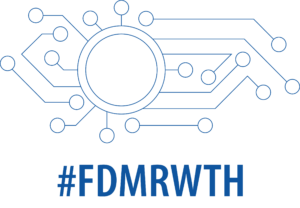
Source: Unsplash
The question of the right research data management (RDM) arises above all for researchers who are still at the beginning of their careers, but also for students who are already taking on smaller research projects. Since they have had little to no contact with RDM to that point, it is unclear to many how research data can be made usable in the long term. Recommendations for RDM in smaller projects can now be found in a new handout by the German Data Forum (RatSWD), part of the Consortium for the Social, Behavioural, Educational and Economic Sciences (KonsortSWD). A set of slides for university teachers was also published together with the handout.
Step-by-step: RDM along the research data life cycle
The handout “FDM in kleinen Forschungsprojekten“(engl.: “RDM in small research projects”; only available in German) contains useful practical tips as well as tools and links along the individual phases of the research data life cycle.
In this way, researchers learn which conceptual, research strategy and organisational questions they need to deal with before and at the start of the project. These include, for example: Should new data be generated or should existing data sets be used? What types of data are generated in the case of a survey and what data protection law or research ethics requirements result from this. It also explains what a data management plan is and what it entails.
The chapter on the “data generation phase” deals with topics such as “data protection”, “storage” and “data organisation”. What measures are necessary when working with personal data? What storage solutions are available and how can data loss and unauthorised access be prevented? How can data be organised most efficiently for daily project work?
In the chapter dedicated to the third phase of the data life cycle, principles of data preparation and data analysis are discussed. To enable other researchers to reproduce the results and to increase the transparency of the research, it is important to document all steps of the preparation and analysis as completely as possible.
Readers can learn about the advantages of data sharing, the requirements that need to be met and how to find a suitable data infrastructure in the chapter on the “Publishing & Archiving Phase”.
In the chapter on “Re-use of research data”, the advantages of re-use are mentioned and important information and links on the topic are provided.
The introduction to RDM is also facilitated by a glossary with explanations of terms. This explains RDM and research terms such as “anonymisation”, “ethical vote” and “theoretical sampling”. The target groups are doctoral students as well as students and researchers of smaller projects in the social, behavioural and economic sciences.
Set of slides for university teachers
The additionally published slide set for lectures (only available in German) is based on the content of the handout and can be used for introductory courses in methodology. Two examples from replication research and qualitative research are used to show why RDM is important. In addition, important basics such as the FAIR principles and the research data life cycle are discussed in more detail before the slides are devoted to RDM along the individual life cycles.
The practical thing is that the slides can be adapted to your own liking, making them suitable not only for different teaching formats but also for different research disciplines.
Where can I find the publications?
The handout and the set of slides are available for free download on the RatSWD website:
RatSWD [Rat für Sozial- und Wirtschaftsdaten] (2023). Forschungsdatenmanagement in kleinen Forschungsprojekten – Eine Handreichung für die Praxis. (RatSWD Output Series, 7. Berufungsperiode Nr. 3). https://doi.org/10.17620/02671.72
RatSWD [Rat für Sozial- und Wirtschaftsdaten] (2023). Forschungsdatenmanagement für kleine Projekte in den Sozial- und Wirtschaftswissenschaften – RatSWD Lehrfolien zur eigenen Verwendung in Forschung und Lehre. https://doi.org/10.17620/02671.75
Learn more
If you have any questions about Research Data Management, simply contact the IT-ServiceDesk. The RDM team looks forward to hearing from you.
_________
Responsible for the content of this article is Sophia Nosthoff.





Leave a Reply
You must be logged in to post a comment.